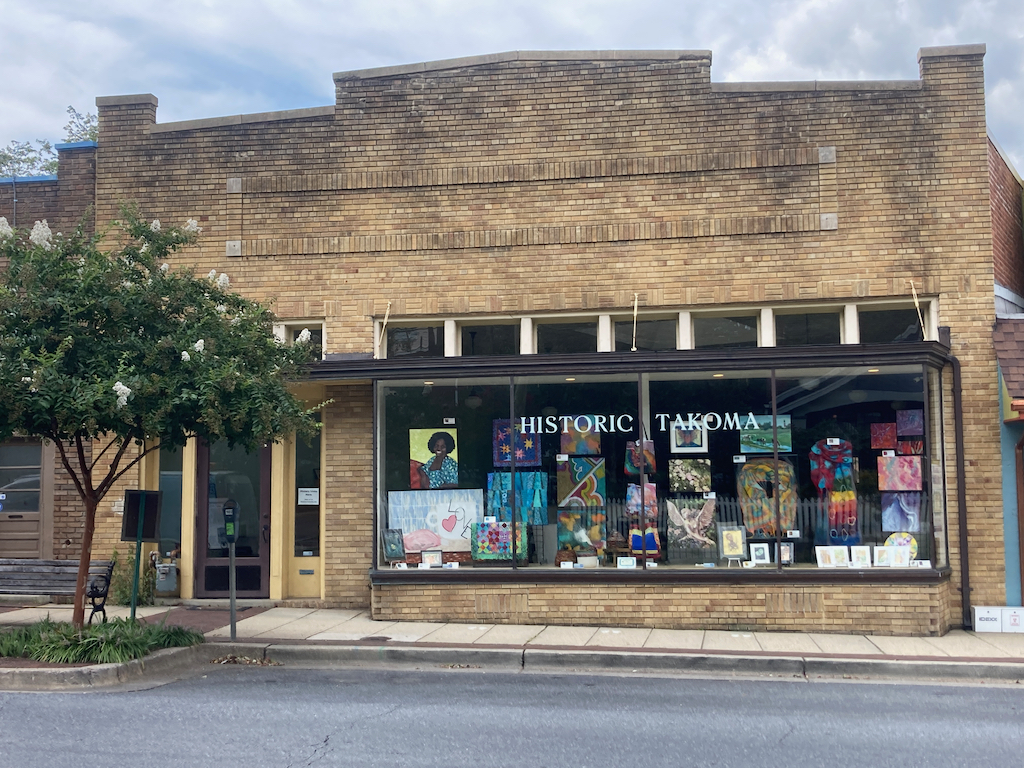
Historic Takoma
History Lives Here

History Lives Here
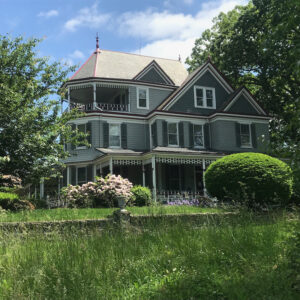
7064 Eastern Avenue, NW, Washington DC
This 22-room Stick Style Queen Anne mansion was built in 1887 for Henry A. Cady and his family, who occupied the house for nearly 90 years. Local builder Frederick Dudley turned the design of DC architect Louis Dessez into a family home with 12-foot ceilings, ornate mantels, carved woodwork and an elegant curved staircase.
When daughter Mary Cady-Lee died in 1973, the house was targeted for demolition by developers. Neighbors rallied to protect the house by securing National Register of Historic Places status. Then they expanded protection for the surrounding neighborhoods with the creation of Historic Districts on both sides of the DC-MD line.
Sandra and Gerald Kurtinitis purchased the house in 1975 and began decades of extended repair and renovation. A second more through restoration by Frances Phipps in 1999-2000 returned the house to its original appearance as seen today. The house is now owned and maintained for by the non-profit Forum for Youth Investment.
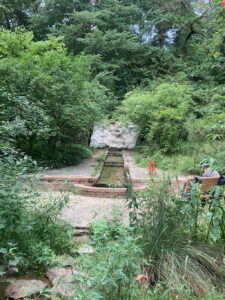
Spring Park – Corner of Poplar Avenue and Elm Avenue
The Spring Park we see today is a shadow of Big Spring beloved by early settlers. Children and adults alike lined up for a taste of the ice-cold sparkling spring water. The clear water is a gift of Mother Nature, rain water that has been filtered through cracks and crevices in rock layers dating to the age of Pangea.
The spring was a major factor in Gilbert’s choice of land for his suburb. Big Spring was part of his second land purchase, and he designated the acre around it as a public park, promising “free and uninterrupted use of the Spring.” He advertised the purity and healing qualities of the water at every turn, even giving away free samples to visitors. Then financial difficulties in 1891 prompted him to sell the rights to market the water to the newly formed Takoma Springs Company. Read More
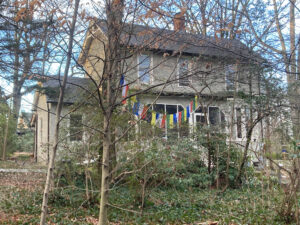
201 Tulip Avenue
At the corner of Tulip and Cedar Avenues, just a couple of blocks from the Metro station sits the historic Thomas-Siegler property.
Built in 1884 for Isaac and Amanda Thomas, the Thomas-Siegler house was the first house to be completed in Takoma Park. Isaac Thomas was the city’s first postmaster and storekeeper. Amanda Thomas resided on the property until selling it to the Franklin Siegler family in 1919.
Franklin’s son, Edward, was a prominent entomologist with the Department of Agriculture for over half a century. In 1984, Edward Siegler’s widow planned to sell the property to developers, who indicated their intent to demolish the original structures, subdivide the property, and construct new homes.Read More
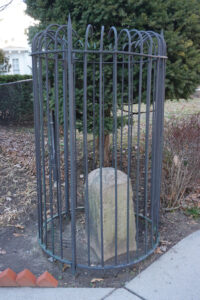
7100 Maple Avenue
This sandstone boulder half hidden across from Community Printing on Maple Avenue is the oldest landmark in Takoma Park. Set in place at the behest of President George Washington in 1792, it is one of 40 boundary markers carving out a 10-square mile Federal Capital (District of Columbia) from Maryland and Virginia.
The resulting line between Maryland and the District split the original 1883 BF Gilbert Takoma Park subdivision in two, with about 40% in the District and the remainder in Maryland (which became part of the eventual Town of Takoma Park). The distinction between the District and Maryland was largely insignificant the early days. Even today the Takoma Park community includes both sides of the line.
Tracing that boundary today is not immediately obvious. The trick is mentally linking the stone to the section of Eastern Ave which intersects Carroll Avenue to Eastern Avenue as it picks up again at Cedar Avenue. Remember it’s a diagonal line. Read More

7201 Carroll Avenue
The fire station standing today where Philadelphia Avenue and Carroll Avenue meet, is the third station on this site. In late December 1893 a fierce fire destroyed the three major businesses adjacent to the railroad station (in Washington, DC). The Town of Takoma Park established a fire department in 1894 and bought an engine and hose reels. The “log cabin” (corner of Laurel and Westmoreland) served as an initial location for the engine. Later the department worked from the Bliss Electrical School (site of the current Montgomery College), and then, in 1922, moved into a new building at the corner of Eastern and Laurel (“Pizza Movers”).
In 1922, the Takoma Park Volunteer Fire Department incorporated into Montgomery County’s volunteer system (which is why Silver Spring is Station #1 although Takoma Park was actually formed first). Read More
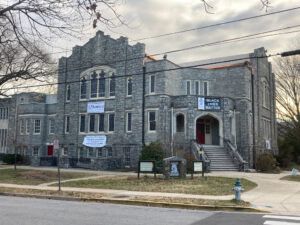
Corner of Maple Avenue and Tulip Avenue
Standing at the southeast corner of Maple Avenue and Tulip Avenue, the Takoma Park Presbyterian Church traces its roots to the earliest days of Takoma Park. With the first houses erected and occupied starting in 1884 by 1886 Bible study classes began in various private homes. Soon a regular Sunday school was organized and in the spring of 1888 took place in a tent on Tulip near Maple, moving to the second floor of Birch’s general store on Cedar Street (near the current Metro station) in colder months. Local ministers began holding services and prayer meetings for adults in the tent on Sunday afternoons and evenings.
In 1888 residents began organizing for a more formal and permanent arrangement. In September a Union Chapel Association was formed, BF Gilbert donated a lot on Maple Avenue, and fundraising for a building began. By the spring of 1889 the first services were held in Union Chapel, located on the site of what is now the Education Building on Maple Avenue. Read More
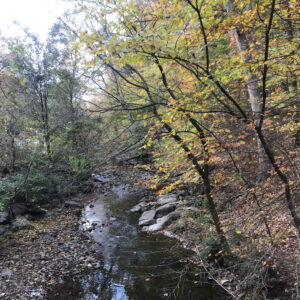
Sligo Creek is our most prominent landmark. It begins in Kemp Mill to our north and traces a diagonal path for 9 miles, crossing through Takoma Park before joining the Northwest Branch of the Anacostia River at the edge of Hyattsville.
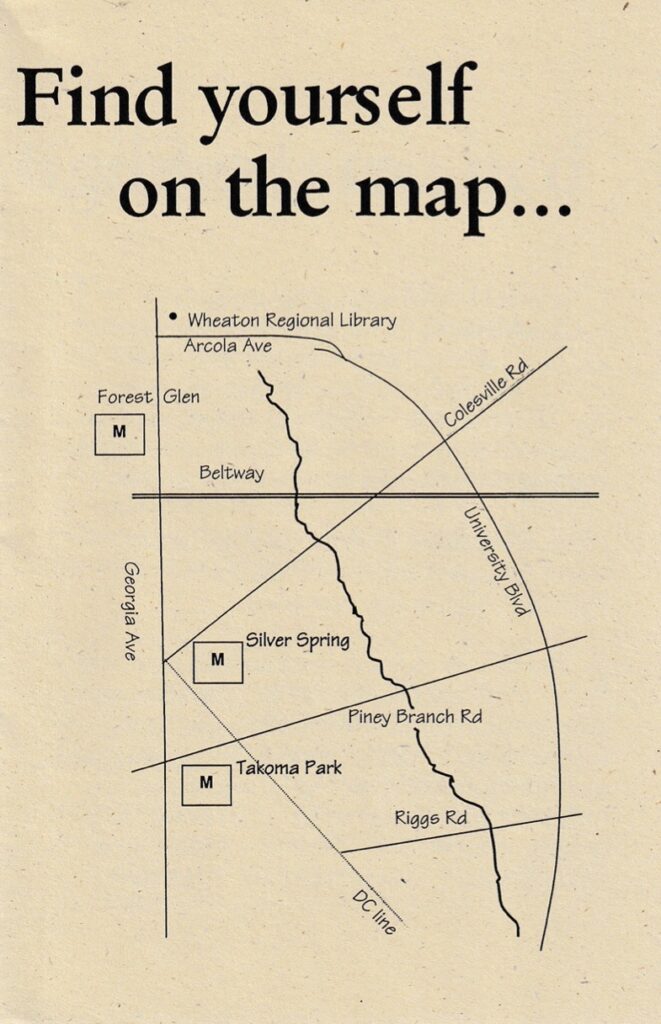
A large number of early images in our Archives show residents photographing each other against the backdrop of the creek as they swim, ice skate, picnic or simply enjoy nature. Sligo’s presence was a key factor in Gilbert’s decision to establish a suburb here. His sales brochures for Takoma Park described the creek as a “rippling cadence of a crystal stream that leaps and dances over rock and boulder.” Read More
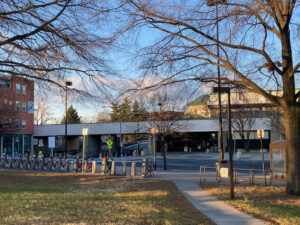
Cedar Street, NW at Railroad Crossing
On the evening of August 17, 1967, Takoma Park’s Victorian train station, standing here on the SW corner, burned to the ground, a victim of arson. The iconic landmark was built in 1897 as one of the series of train stations designed by Ephraim Francis Baldwin for the Baltimore and Ohio Railroad. Two Baldwin stations still stand in Kensington and Gaithersburg, giving us some sense of what we lost.
Takoma Park owes its existence to this railroad crossing. It inspired Benjamin Franklin Gilbert to imagine a commuter suburb established in 1883. He quickly changed the station name from “Brightwood” to “Takoma Park.” The station stop sits just inside the District and provides a strong bond between the two halves. Read More

Fourth and Butternut Streets, NW
Takoma Theatre, still sporting its iconic marquee, was given new life in 2020 as Children’s Hospital at Takoma Theatre.
The 724-seat theatre opened on July 2, 1923 when movies were still silent. Local residents commissioned John J. Zink as architect. He would go on to design more than a dozen other local theatres. The Grecian Temple details and interior dome ceiling became as much of a draw as the movies themselves. Read More